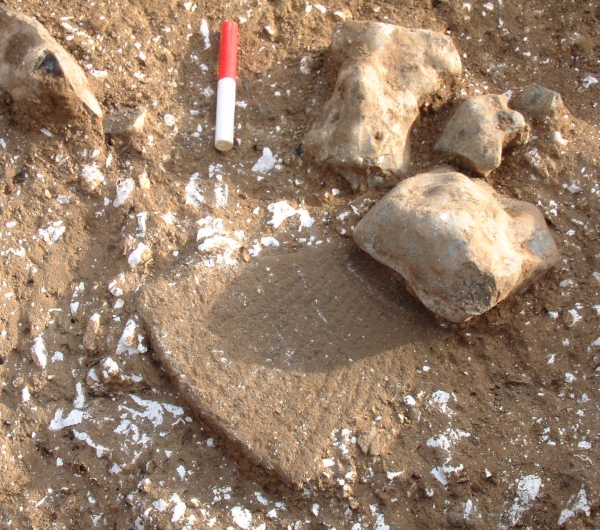
Todays VM_365 image comes from the excavation of a Roman period cellar at Upton, near Broadstairs, one of the three areas where the Trust has established the presence of Roman building remains in Broadstairs in the last decade. Like the sites at Stone Road and Fort Hill, nothing remained of the structures that would have been above ground level at the Upton site.
To undertand what the cellared buildings we have located might have been we need to look closely at the finds that are associated with them, to gain some context and to be able interpret the uses they were put to. In both the building at Upton and at Stone Road large pieces of finely dressed millstones were found. The one in the image above was around 50mm thick, the upper surface had been dressed with an even pecking all over, the lower face had a series of teeth cut into the surface radiating from the 100mm diameter central hole. The whole millstone had a diameter of approximately 0.83m. Stones like this would have been large and heavy and while it is possible they were worked by hand, it would have taken considerable effort and perhaps animal power might have been used to drive them.
In the future perhaps research and observation of communities that still use similar millstone as well as experimental archaeological methods could give a greater insight into the quantity and quality of the flour that could be produced and perhaps the food that could be made with it.
One thought on “VM_365 Day 59 Roman millers make finer flour”